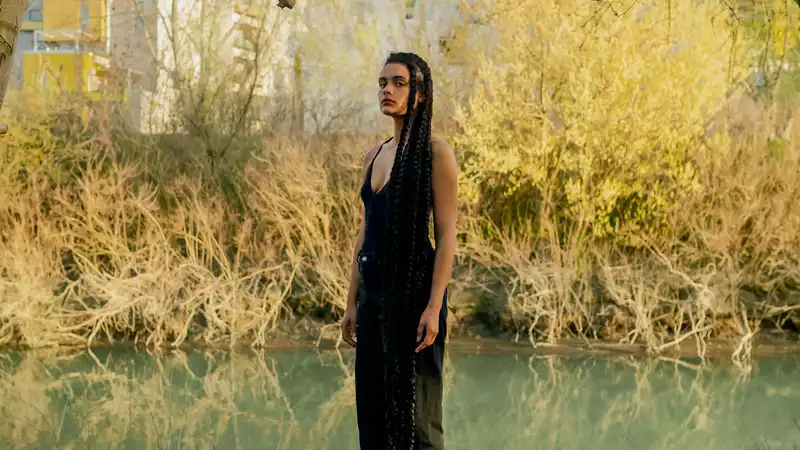
Dior Photography Award Winner Cedrine Scheidig on Inspiration
Cedrine Scheidig belongs to a younger generation that the media calls Generation Z. Young people who strive to create what they represent. A generous and egalitarian generation that rejects norms. Through her sensitive and delicate gaze, Sedrine Scheidig expresses the poetic sentiment, nostalgia, conflict, and hope of these young people, whom she calls "diasporic," as they define their own history and territory.
I like to work in a fragmented way, producing each photograph as an independent image and later grouping them together. Each photograph is structured around a gesture. Exploration, self-discovery, grounding, and rooting through my relationship with nature. I always start from my own experience, my own identity, and then zoom out to look for an anchor. My position is always somewhere in between. I find the documentary approach problematic for me. There is a genealogy of images that came before me that does not fit me at all. I want to blow up media representations. And at the same time, my work is based on a process of extraction from reality. Because my work articulates a diasporic identity, to include different bodies, through the idea of dual belonging, of being open to different identities. [It is the fact of belonging to a diaspora that W. E. B. Du Bois called "double consciousness." There are a lot of words floating around right now, such as diaspora, Afrodescendant, or the new term "Afropian" popularized by Johnny Pitts. I like this term because it blurs boundaries and brings people from very different places together as people who nevertheless share a common life experience. I grew up in Seine-Saint-Denis, a very diverse suburb of Paris. Most of my photographs are taken here, but you can't really tell because my work, despite being completely rooted in this landscape, shows a non-territorialization. The image of France as a diverse ethnic, working class, crime ridden suburb is highly charged and we always consume the same images from these spaces. I try to create images that I have never had and wanted to have: people who look like me, spaces that I find interesting, etc. [Photographers like Zanele Muholi, Mimi Cherono Ng'ok, Santu Mofokeng, and American photographers like Dawoud Bey. But I am also passionate about the history of photography, and I love the Dusseldorf School, for example. I also read a lot of Edouard Glissant's writings and Stuart Hall's writings on the Afro-descendant body in television representation. He theorizes the "end of the notion of the essential black subject," a concept that explores the possibilities of diverse representations of the black body once it escapes essentialism. Essentially, it is the equivalent of what Edward Said called "Orientalism," any representation of the essentialized black body as imagined by colonial history. The "end of the notion of the essentialized black subject" is when this subject opens its beak to an infinite number of possible representations, a play on stereotypes. In my work, I see these bodies through their deep and strong relationship with the earth and the environment, their organic and ecological connections. Many young artists and young photographers from the diaspora are emerging and opening up discourse and expression. And they are not content with what they have been given, but are claiming their own space. It is as if to say, "We are taking over this space; we are taking over this space; we are taking over this space.
It is true that there is a softness in my work, almost an affection. I photograph mostly male bodies. Some seem to be resting, others are calling out to me to calm down. But to claim that for a body that is constantly working, fighting, and struggling is quite political. The only female body in this series is my own self-portrait. As a woman, I also like the idea of exploring the representation of the male body and photographing it softly, as if it were something organic, rooted in the earth.
It's a fairly classic genre of photography that I wanted to explore. I always try to create small changes in the photographs by inserting objects that speak to a diasporic identity and lead to a specific reading. Concrete, afro comb, piece of cloth: ...... familiar words, small objects that refer to space that I know and that are not in the classic still life.
This was new and very unexpected. I am happy because I belong to a new scene that is constantly developing and creating new expressions. Most of the images that reach us are imposed images. One of the things I try to build through my work is the idea of opening up the imagination. To do that, my images need to reach as many people as possible, and to do that I need the support of larger institutions. I know that some artists refuse to do so, but that inevitably pushes them to the periphery and keeps them forever confined to a peripheral existence. It is possible for someone like me to be a photographer, to make images, and to be an artist. The same is true for museums: the more people like us there are, the more they will be able to accommodate diverse sensibilities.
This article is a translation of one that appeared in Marie Claire France.
.
Comments